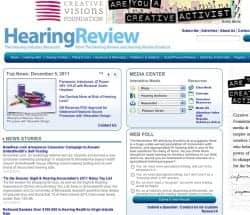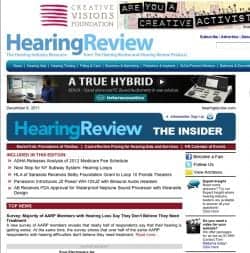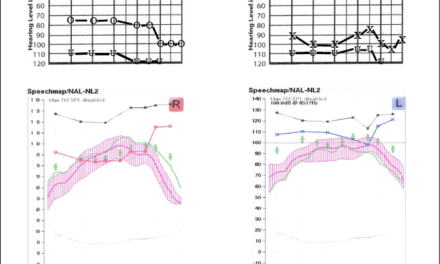
TOP HEADLINES
- HLAA Takes Wait-and-See Position on UH/hi HealthInnovations Plans
- ASHA Releases Analysis of 2012 Medicare Fee Schedule
- Clarity and ClearCaptions to Jointly Create New Products
- Tis the Season: Sight & Hearing Association’s 2011 Noisy Toy List
- BHI Publishes Your Guide to Tinnitus eGuide
- Majority of AARP Members with HL Say They Don’t Need Treatment
- Panasonic Introduces JZ Power WH-105JZ with Binaural Audio Headset
- JMU’s 2011 Roger Ruth Memorial Student Research Awards Announced
- Phonak’s 4th European Conference on Pediatric Amplification
- AHAA’s 2012 Convention Theme: Connect-Learn-Grow
Nation’s Larget Hearing Advocacy Group Takes Wait-and-See Position on UH/hi HealthInnovations’ Plans
In response to the controversy over UnitedHealth Group (UH) and subsidiary hi HealthInnovations’ plans to offer a direct-to-consumer hearing aid, the Hearing Loss Association of America (HLAA) on November 17 issued a statement by HLAA Executive Director Brenda Battat calling on members to keep an open mind about the UH’s approach (www.hearingloss.org/content/hlaa-speaksout-on-UnitedHealthcare-initiative).
Battat says HLAA members should “take a step back and ask ourselves if this traditional [professional care only] approach is reaching most people who could benefit from hearing aids? We all know the answer is no. With 75% of people who could benefit from hearing aids not taking steps to treat their hearing loss, we are failing a large percentage of people who could improve their quality of life, remain independent into old age, and stay on the job without retiring early.”
She says that people need more options in addressing hearing loss, and she believes that consumers should be the ultimate judges of the product and system’s worth. States Battat:
“There are already self administered tests that we know consumers are using in the privacy of their homes to confirm what they suspect, that they have a hearing loss. But the next step to follow up with a more thorough hearing evaluation is often skipped or, if pursued, is stymied when they learn what a pair of hearing aids is going to cost them. Best intentions are shot down. The number one inquiry into the HLAA office is how to afford hearing aids. UnitedHealthcare is making it feasible for consumers to go all the way and actually get aids for free or at reasonable co-pays or cost.”
Battat says that HLAA’s main concern about the device relates to consumer safety. However, she says that UH has a robust network of health care providers and is developing new modalities for those consumers who need special and/or more individualized care. “The program has been designed as a responsible alternative that in no way replaces the existing system but has the potential to reach those who wouldn’t otherwise do anything or could not afford to do anything to treat their hearing loss,” states Battat. “I think we should give it a chance and applaud [UH] for identifying a pressing health need among America’s seniors and being bold enough to tackle it.”
Letters from all four of the major hearing care professional organizations (IHS, ADA, AAA, and ASHA), as well as several state hearing-related organizations, have been critical of hi HealthInnovations’ plans to market a direct-to-consumer hearing device (see last month’s HR Online News). Additionally, the American Medical Association published an article on its news Web site, amednews.com , containing quotes from doctors who were critical of the company’s plans and raised concerns about decreasing the quality of hearing health care for patients and the chance for misdiagnosis.

Get Your Weekly Edition of THE INSIDER
Every week The Hearing Review sends out THE INSIDER, a weekly FREE e-newsletter devoted to the top hearing-related news, research, product introductions, fitting topics, and marketing research stories that are influencing your business or practice, as well as the industry at large. [register]Sign up for your free subscription[/register].





